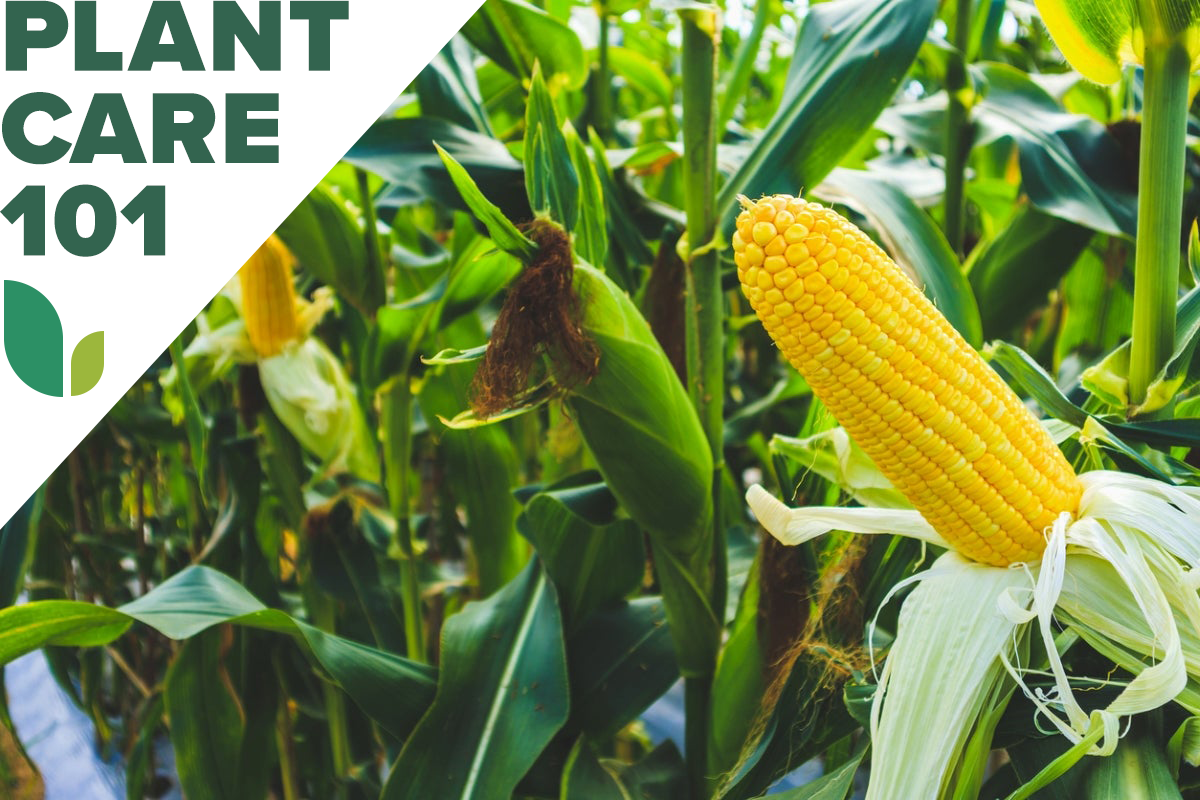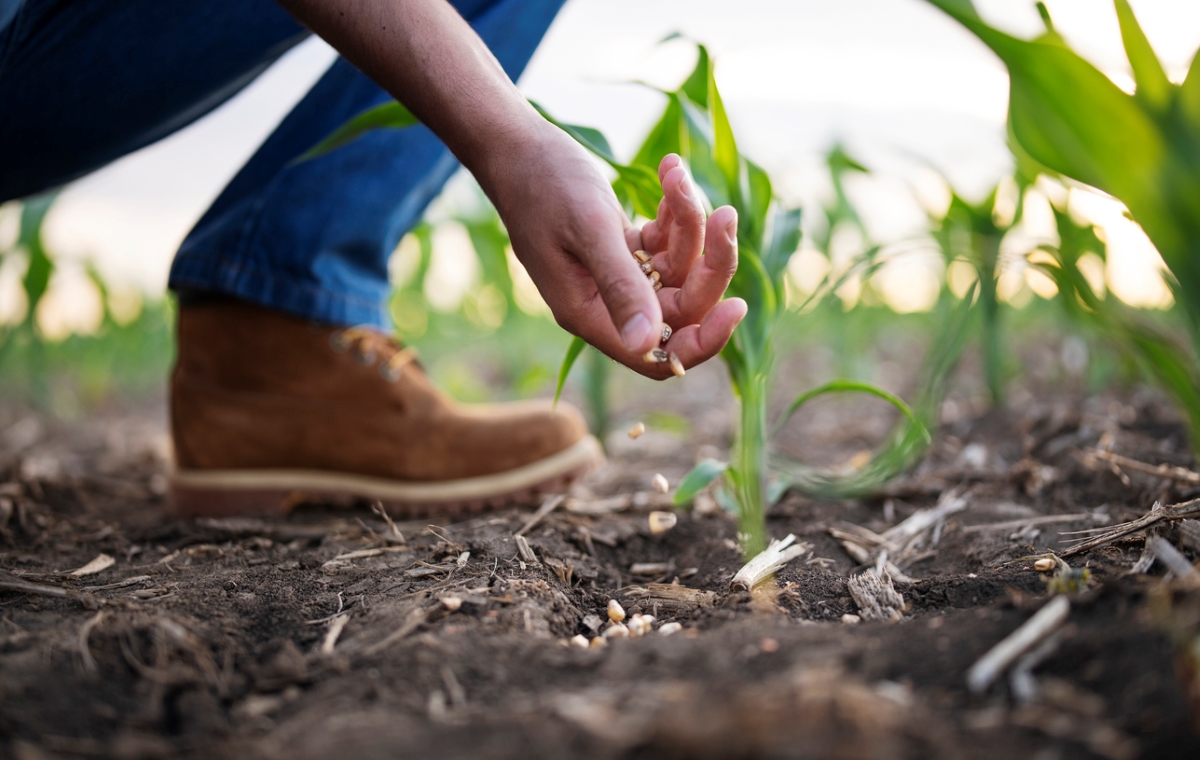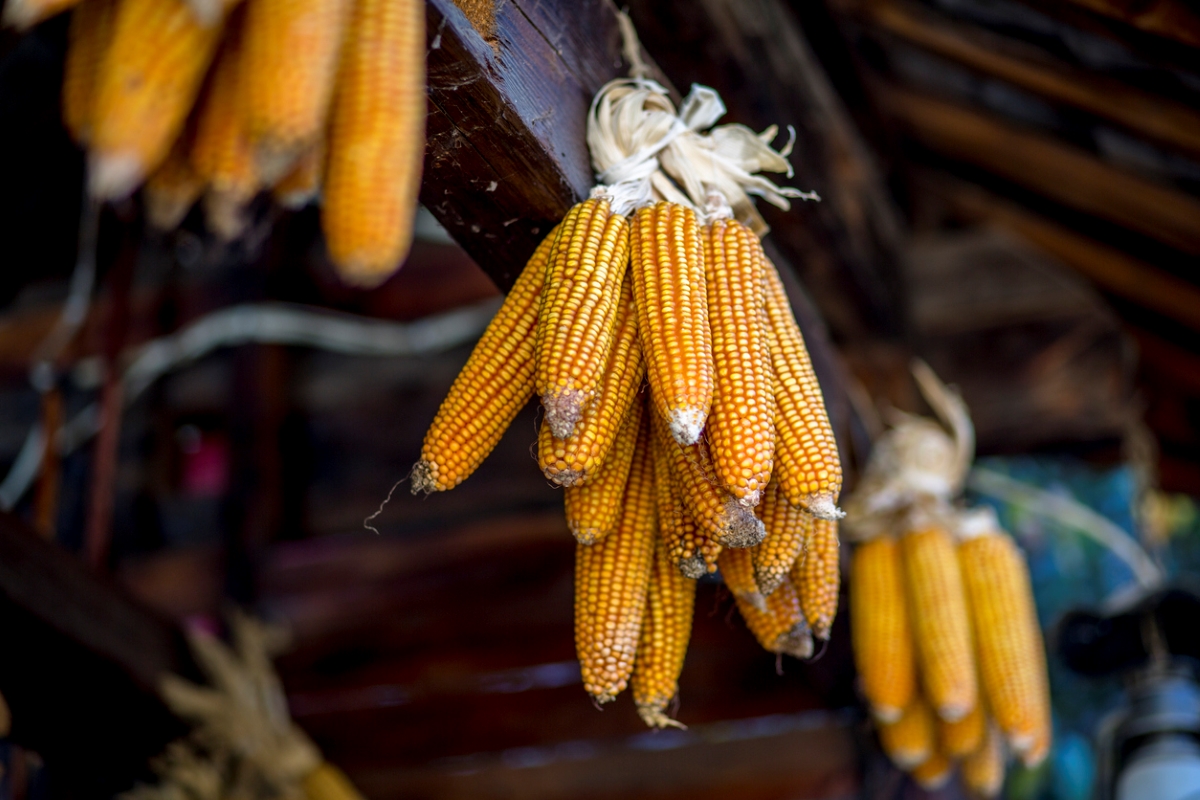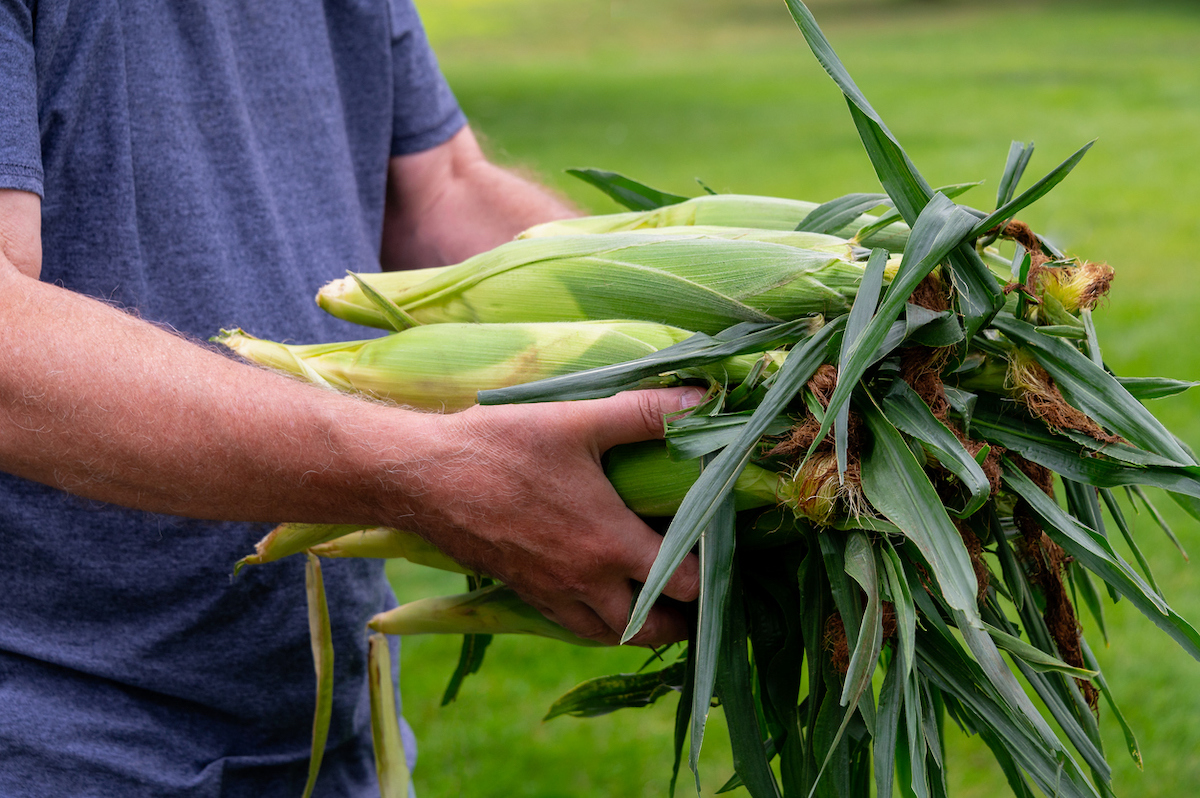

We may earn revenue from the products available on this page and participate in affiliate programs. Learn More ›
If summer was a flavor, it would be the taste of homegrown corn on the cob next to a rack of ribs. Sure, you could pick up your corn from the grocery store or farmers’ market, but learning how to grow corn offers you a delicious and convenient supply of corn as you need it.
There is a lot to learn about growing corn, but if you prepare early, your sweet corn will be ready to harvest by the end of summer—it’s the perfect addition to salads, appetizers, soups, and more. Follow this guide to see how easy it is to grow sweet corn plants at home.
Growing Corn at a Glance
Common Name: Sweet corn, sugar corn, pole corn
Scientific Name: Zea mays convar. saccharata var. rugosa
Hardiness Zone: 3 to 11
Soil: Well-draining, pH 5.8 to 7.0
Light: Full sun
Water: High
Food: General-purpose fertilizer
Propagation: Seeds or transplants
Safety: Uncommon allergen, possible choking hazard
Corn Plant Characteristics

Sweet corn comes in hundreds of varieties; depending on the type, corn can reach full maturity between 60 and 100 days after planting. It’s a tall annual grass plant, which explains sweet corn’s long stalk. The sweet corn plant is characterized by its solid, stout stem and large, narrow leaves that grow in an alternating upward pattern. Beneath the husk, the corn comes in several possible colors, including yellow, white, dark blue, bicolored, and more.
Sweet corn has several names, including sugar corn and pole corn, referring to its flavor and the way it grows, respectively. This type of corn is a variety of regular field corn that has been bred to enhance sugar levels for more sweetness than regular corn.
Corn (maize) has a rich history, dating back more than 6,000 years. It has been discovered in Mexican caves from thousands of years ago, and it is also one of the “sisters” in a traditional Native American “three sisters” garden—made up of corn, squash, and beans.
Recommended Sweet Corn Varieties
With hundreds of varieties of sweet corn to choose from, home gardeners may need some advice about which types work best in a backyard garden. In general, there are five genetic types of sweet corn: standard sugary (su), sugary enhanced (se), shrunken-2 (sh2), synergistic (syn), and augmented supersweets (shA). The right type for your garden depends on the sweetness you want and the growing conditions in your area.
Here are some of the best sweet corn varieties to grow:
- Jubilee hybrid (su): These long ears of corn reach up to 9 inches long, boasting bright yellow kernels. Stalks grow to be approximately 6 feet tall.
- Peaches and Cream (se): With a mix of white and yellow kernels on 8-inch ears, this variety is known for staying fresh longer than other types of sweet corn.
- Blue Hopi (sh2): Known for its dark blue kernel color, this heirloom sweet corn grows on 5-foot stalks, produces 8- to 9-inch ears, and matures in up to 110 days.
- How Sweet It Is (se): An All-America Selections vegetable, this one has tender white-kernel corn in about 87 days that stores well. Expect 8-inch-long ears on 6.5-feet-tall plants.
- Sweetie (shA): Crisp yellow corn kernels grow on ears up to 7 inches long on stalks that reach about 6 feet high, and they’re ready to harvest in 82 days. This variety retains sweetness while on the stalk and after picking.
RELATED: The 16 Easiest-to-Grow Vegetables for Novice Gardeners
Planting Corn

Planting corn is relatively simple and doesn’t require much preparation on a gardener’s part. In spite of growing into tall stalks, sweet corn can grow in containers in addition to garden beds. It’s important to provide corn with the right growing conditions to ensure a bountiful harvest at the end of the season. New growers should know that each stalk may produce only one to three ears, so corn plants can take up some space in the home garden.
When is the best time to plant corn?
Learning how to grow corn is easier when you know the best time to plant the seeds. Sweet corn seeds do not tolerate cold, so be sure to exercise patience before planting. Wait until the area has been frost-free for 2 to 3 weeks. If you aren’t sure how long it has been, check your local first and last frost dates online to know when to plant corn.
In general, sweet corn gets the best results when planted after the middle of May. For optimal germination when planting sweet corn, your soil temperature should not be lower than 50 degrees Fahrenheit.
Where can sweet corn grow?
Sweet corn can grow practically anywhere—with the exception of Antarctica—if you give it the best chance to survive. Sweet corn grows best in areas that get lots of natural sunlight and places where the soil stays warm.
If your area lacks warmth and sunshine, use alternative methods to give the sweet corn plants the energy they need. For example, growing corn in containers that can follow the sun, moving plants indoors, or adding artificial light sources can boost growth.
RELATED: 10 Plants That Grow Better with Companions
How do you plant corn?
As with any gardening project, home gardeners want to know how to plant corn, how far apart to plant corn, how they are pollinated, and any planting techniques that give their sweet corn plants the best chance for success. To boil it down, there are three essential corn-planting steps.
- Choose a planting location for sweet corn that has rich soil and receives at least 6 to 8 hours of light per day.
- For corn plant spacing, create holes about 1-inch deep spaced 7 to 12 inches apart. Arrange these holes in a square or block pattern of several short rows instead of in one long row, since sweet corn is wind-pollinated and the grouping will help pollen drop onto surrounding silks (fibers on the corn) rather than the ground or surrounding plants.
- Place two or three sweet corn seeds inside each hole, cover the seeds with soil, and water.
Can you grow corn in containers?
You can grow sweet corn plants in containers; just be prepared for a smaller yield than you would have in a garden. Make sure the container is at least 12 inches deep and 12 inches wide, and comes with holes in the bottom of the pot for adequate drainage. Keep in mind, this is a minimum size requirement—If you have the space for a larger container, use it.
Your sweet corn container should fit about four plants. Place the container in an area that gets lots of sunlight, and follow the same recommendations for watering and care as outdoor sweet corn plants.
Watering Sweet Corn

Sweet corn plants require at least 1 inch of water per week when it’s warm and they are growing. If you live in an area with lots of rain, it may be necessary to cut back on your own watering to avoid water logging the plants. On the other hand, if soil is sandy, corn might require more frequent watering.
When watering, do so in the morning—otherwise the sun might evaporate water before the plants can benefit from it. Moisten the soil about 8 to 12 inches deep for the best results, which should also provide hydration for deeper roots. If you are worried about evaporation, apply a mulch mixture on top of the soil to keep the moisture in. Plant roots will grow downward to varying degrees to find water if you don’t provide it for them.
Fertilizing Corn Plants
Growing corn is fairly easy, but you will need to add fertilizer. Fertilizer should be worked evenly into the soil (about the top 2 to 3 inches) before seeding. Sweet corn needs regular doses of nitrogen, phosphorus, and potassium. The usual rule of thumb is to apply 3 to 4 pounds of 10-10-10 fertilizer per 100 square feet.
If your plants turn light yellow, it’s a likely indication they need more nitrogen. Should your plant’s leaves start to turn purple at the edges, give them some more phosphorus.
Some gardeners add a side-dressing of fertilizer when the corn plant is about 12 inches tall, particularly if it’s grown in a light, sandy soil. Apply as directed, but be wary of burning the roots of the plant—keep direct fertilizer about 3 to 4 inches away from either side of the sweet corn plant.
Propagating Sweet Corn

Want to know how to grow corn from your existing plants? You can propagate sweet corn two ways: with seeds or from transplants.
Sweet corn seeds can be made by leaving your corn to mature and dry out on the stalk. Remove the corn when it starts to dry and turn brown. Pull back the husks to expose the kernels, then braid several husks together to create a bunch of corn. Hang them in a room to air-dry—be sure the air is warm, but not hot. Three months later, shell the kernels from the ears and store the seeds in a cool dry place until you are ready to plant them.
Transplants can be planted whenever the season is warm enough to grow sweet corn. Simply follow the planting instructions above with your young corn plants.
Safety Considerations
Although corn allergies are not common, the symptoms are the same as any allergen. Those who are allergic to corn may break out in hives, rashes, itchiness, and more. If any members of the household have a corn allergy, it may be a cause for concern when deciding whether to grow it.
Additionally, corn is safe to eat as long as it is off the cob. The toughness of the cob can obstruct airways and become a choking hazard if swallowed—making it potentially dangerous for small children and wild animals.
Potential Pests and Diseases
There are several pests that can harm your sweet corn, including European corn borers, cutworms, common stalk borers and fall armyworms. Use a natural remedy, or an insecticide if necessary, to remove them and keep your garden bug-free. If using insecticides, be sure to study the product label for directions on applying near harvest.
Sweet corn is rarely ruined by diseases in a home garden. Common diseases for sweet corn are rust, mosaic virus, and smut. Unfortunately, there are no real ways to control rust and mosaic virus.
Corn smut is easy to spot since it develops as large sooty masses on the corn—often in a white or gray-white color. This occurs when temperatures and moisture content are high. Remove any ears that have been affected by smut before it spreads.
Seed rot is also a possibility that occurs when the seeds are exposed to cold, wet soil and have prolonged exposure to the fungi in the soil. Prevent seed rot by using high-quality seed, and plant them once the temperature is above 55 degrees Fahrenheit.
RELATED: 15 Things to Plant Now for Your Fall Vegetable Garden
Harvesting Corn

The easiest way to tell if sweet corn is ready for harvest is a puncture test. Take your fingernail and puncture one of the kernels near the middle, if it leaks milky liquid, it’s ready to harvest. Another way is to look at the corn silks, if they are starting to brown and shrivel your corn should be ready.
When is the best time to harvest sweet corn?
Sweet corn is ready to be harvested 15 to 23 days after silks appear. Warm or hot weather will cause the sweet corn to mature and become ready faster, whereas cooler weather will make the corn take longer to ripen.
Corn should be harvested when the weather is cool—in the early morning or early evening, if possible. These times of day are best for harvesting sweet corn to keep the cobs as cool as possible, which minimizes the loss of sugars. If you harvest sweet corn in the heat of the day, those natural sugars turn into starch.
How do you harvest corn?
When the stalks are tall and the ears are full-size, it may be time to harvest your sweet corn.
- Make sure that the corn is ready to be harvested by conducting a puncture test on one of the kernels.
- If the test kernel shows a milky liquid, grasp the ear of sweet corn firmly, pull it down, and twist to snap the ear off the stalk.
- Only harvest as much as you will use, so the rest of the corn stays fresh on the stalk.
- Harvest the remaining ears of corn while they still are in the “milky” stage for best results. Otherwise, let the kernels dry out on the stalk, and turn the kernels into seeds for next year.
How do you store corn?
Ideally, sweet corn should be eaten as close to harvest as possible. This is because the sugars in the corn start to turn starch if left too long. If you cannot eat it immediately, leave the husk on the sweet corn to prevent it from drying out.
If you have husked the corn, place it into a plastic bag and store it in the refrigerator. It can stay fresh there for up to three days—although the longer you wait, the less sweet the corn tastes. If you have a lot of corn, remove the husks, blanch the kernels, put them in an airtight container, and freeze them. This should keep for about six months to a year.
Looking for more edible garden plants? Check out our guides on growing broccoli, microgreens, and vegetable gardens.
